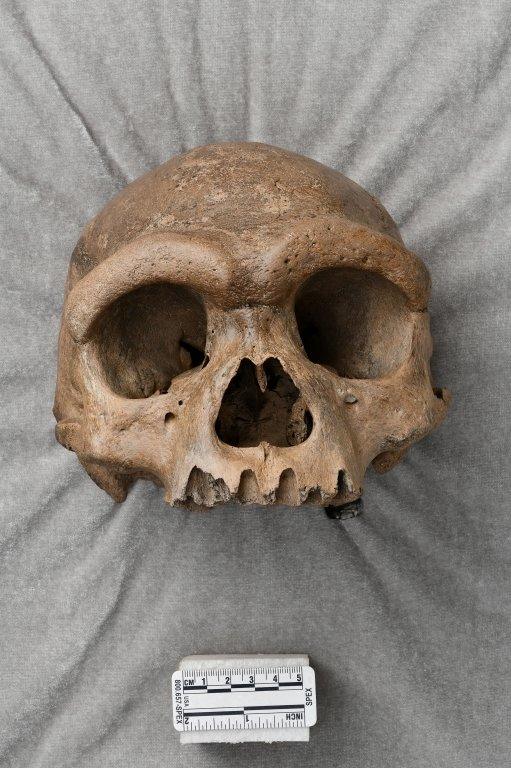New ancient species could be humans' closest relative
- Published
- comments

The ancient fossil is thought to be more than 146,000 years old
Neanderthals are often linked to modern humans, but a new species of ancient human discovered in China could soon replace them as our closest relatives, according to scientists.
Described as Homo longi or "Dragon Man", the human relative was identified from a skull fossil which is said to have been found in China's Harbin City in Heilongjiang province in 1933.
The ancient fossil is thought to be more than 146,000 years old and is believed to have belonged to a male who was around the age of 50 at the time.
The new species of ancient human is believed to be humans' closest relatives
Researchers have said the skull is big enough to hold a brain that is similar in size to that of a modern human, but they added that the Dragon Man would have had larger eye sockets, thicker ridges around the brow area, a wider mouth, and bigger teeth compared to humans today.
The experts say the fossil suggests Homo longi was closer to modern humans than Neanderthals and raises some questions around our current understanding of human evolution.
"It is widely believed that the Neanderthal belongs to an extinct lineage that is the closest relative of our own species," said Xijun Ni who is a professor of primatology and paleoanthropology at the Chinese Academy of Sciences and Hebei GEO University.
"However, our discovery suggests that the new lineage we identified that includes Homo longi is the actual sister group of Homo sapiens [humans]."
The researchers believe the Dragon Man lived as part of a small community in a flat forested area of land next to a river or stream.
They say that he, and the rest of ancient Harbin people, would probably have been "very large in size" and capable of adapting to harsh environments.
The Dragon Man is believed to have had larger eye sockets, thicker ridges around his brow area, a wider mouth, and bigger teeth compared to humans today
"Like Homo sapiens, they hunted mammals and birds, and gathered fruits and vegetables, and perhaps even caught fish," said Professor Ni.
The researchers also believe that the Dragon Man's community would also have encountered modern humans during his time.
They say their latest findings have the potential to rewrite major elements of human evolution and push back the common ancestor modern humans share with Neanderthals even further back in time - roughly 400,000 years earlier than previously thought.
"The divergence time between Homo sapiens and the Neanderthals may be even deeper in evolutionary history than generally believed - over one million years," said Professor Ni.
- Published11 July 2019
- Published7 November 2017
- Published5 March 2015
